textless: These little green hopper nymphs will grow into…
Wednesday, August 14th, 2013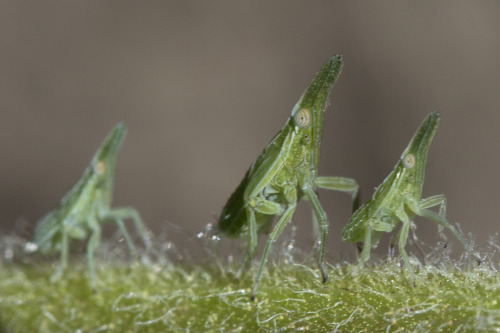

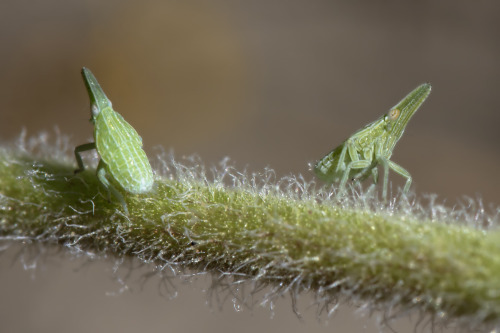
These little green hopper nymphs will grow into slightly bigger, brown, thorn mimicking hoppers.
Reposted from http://lies.tumblr.com/post/58272387095.



These little green hopper nymphs will grow into slightly bigger, brown, thorn mimicking hoppers.
Reposted from http://lies.tumblr.com/post/58272387095.


Elegant Golden Jumper (Chrysilla lauta)
…a species of jumping spider that ranges from Burma to China and Vietnam. This species is noted for its long abdomen, long first pair of legs and unique coloration. Although this species was discovered in 1887 much is still not known about it and only male specimens have ever been described,
Phylogeny
Animalia-Arthropoda-Arachnida-Araneae-Araneomorphae-Salticidae-Heliophaninae-Chrysilla-C.lauta
Images: Jeevan Jose and Hirzi Hussain
Reposted from http://lies.tumblr.com/post/58153805419.
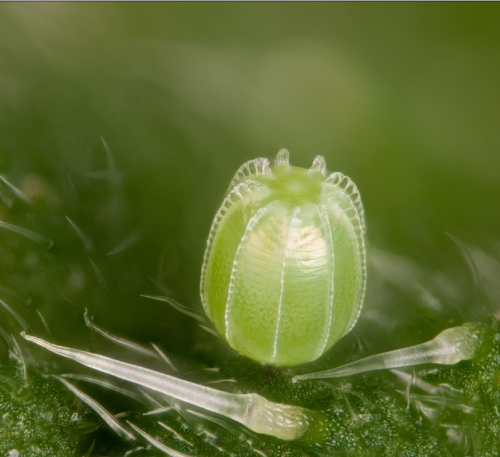
Red admiral egg
The egg of a red admiral butterfly (Vanessa atalanta) in stinging nettle (Urtica dioica) trichomes photographed by David Millard of Austin, Texas with diffuse incident illumination
Reposted from http://lies.tumblr.com/post/57883752951.



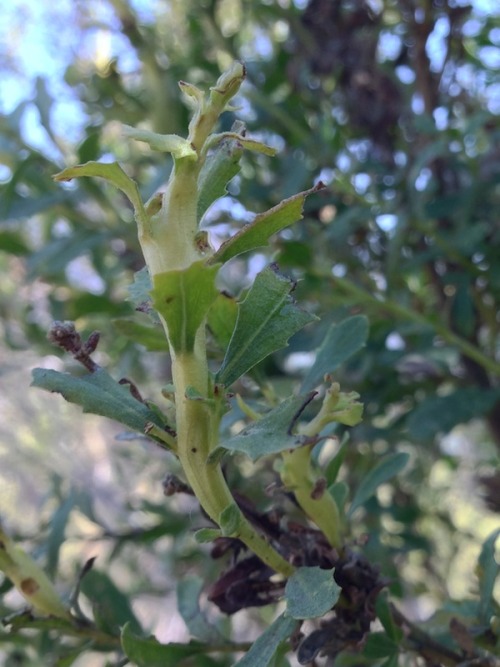
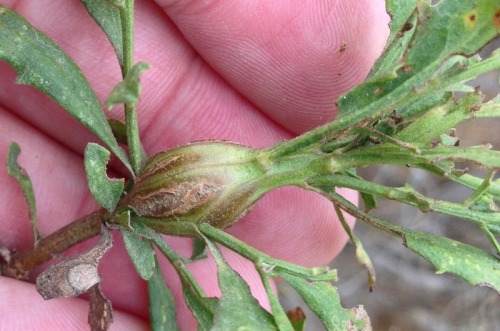
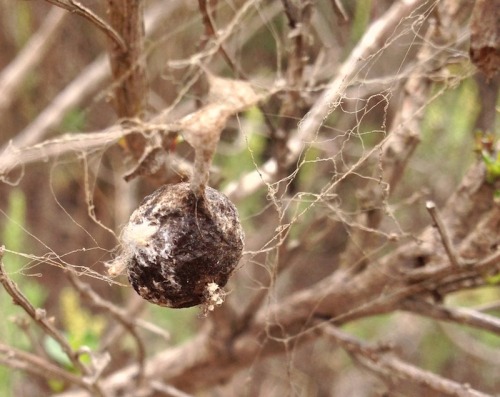
Bugs at the marsh
Here are more photos I’ve taken recently at the Carpinteria salt marsh. These all relate to arthropods (to insects, mostly, plus one spider), so I’ve put them in a separate post to help anonsally avoid them with Tumblr Savior.
The outbreak of green leaf beetles (Trirhabda flavolimbata) that defoliated much of the marsh’s coyote brush (Baccharis pilularis) has now ended. There are only a few adult beetles left, and the coyote brush has started putting out new leaves. I took the photo above on July 14, when the beetles were still fairly easy to find.
The next image is of a syrphid fly in the genus Allograpta; probably A. obliqua or A. exotica. I took this photo the same day as the beetle photo and just a few feet away; both insects were sitting motionless at the tips of their respective stems, giving me time to take lots of shots until I got the focus right. Syrphids (also called hover flies or flower flies) act like bees, hovering to drink nectar from flowers and serving as important pollinators. They don’t have stingers, but have evolved warning colors like bees and wasps to confuse predators into leaving them alone. This is “Batesian mimicry,” named after 19th-century British naturalist Henry Walter Bates, who first observed it in South American butterflies. Whenever I hear the term, though, I think of Mrs. and Miss Bates from Emma.
Next are a couple of photos of super-cool twisted stem galls in coyote brush. The galls are the work of Rhopalomyia baccharis, a tiny midge. The adult midges look identical to their close relatives, Rhopalomyia californica, which I’ve blogged about before, but the galls are completely different. R. californica galls are the size and shape of a marble, and are found at the end of coyote brush stems. R. baccharis galls take the form of these thickened S-curves in the stem itself. A single larva lives in a chamber below each of the gall’s curves. Unlike R. californica larvae, which chew their way to the gall’s surface before they pupate, R. baccharis larvae pupate deep within the gall. Then, somehow, they trigger the host plant to create a tunnel leading to an elliptical exit hole just in time for the adult midge to emerge. The lefthand image above shows me holding a gall to give a sense of scale, while the righthand image shows a different gall with one of those elliptical exit holes.
There is a patch of coyote brush near the marsh amphitheater that has a bunch of these galls right now, and I’m really excited about it, because although I’ve looked for them for years I’ve previously only found a few of them. Hopefully the city Parks and Rec. Department gardeners won’t prune these, as they previously did for another batch of twisted stem galls I found at the marsh.
The next image shows me holding another kind of coyote brush gall. This is the work of a moth called Gnorimoschema baccharisella. A single caterpillar lives inside the gall. When it’s ready to pupate the caterpillar chews its way out and burrows into the ground. But that’s not the end for the gall. Now that it has that convenient hole, a bunch of other species invade it. Fungus grows on the departed caterpillar’s frass (droppings) inside the gall, fungus mites arrive to feed on the fungus, and probably lots of other things happen that I haven’t learned about yet. You can read more about G. baccharisella and see some video I took of a fungus mite running around inside an old gall at my Carp Without Cars blog.
The last image above is not of a gall, but of the kind of thing many observers mistakenly think galls are: an egg case. Specifically, an egg case of the bolas spider (Mastophora cornigera). Bolas spiders have an amazing hunting behavior: They catch their prey not by weaving a web, but by letting out a silken thread with a sticky blob on the end, then waving it around to lasso passing moths. To help improve their chances, the blob gives off a chemical scent that closely imitates the pheromones of the target moth species. Researchers have found that the bolas spider varies the chemical signature of the scent lure over the course of the night, to better match the pheromones of different moths species that tend to be active at different times.
I wrote more about the bolas spider in another post at Carp Without Cars, so check that out if you want. You can also watch a really cool video from David Attenborough’s Life in the Undergrowth series, showing a bolas spider capturing its prey. It’s kind of creepy to watch, even for someone like me who has worked for decades to overcome his arachnophobia, but I think it’s worth it.
Reposted from http://lies.tumblr.com/post/57850503745.
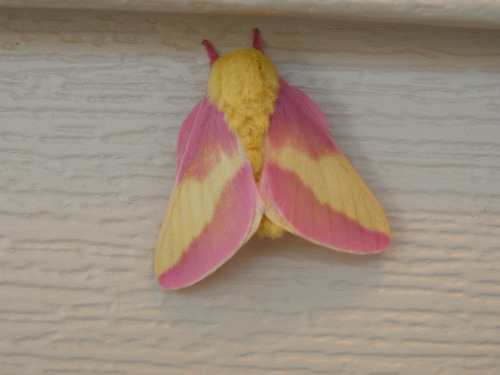
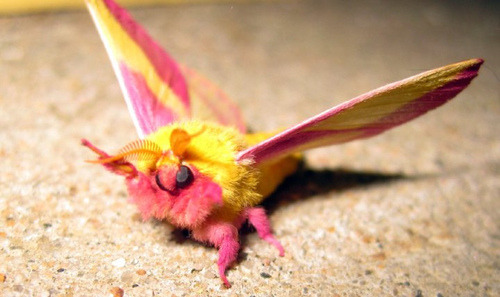
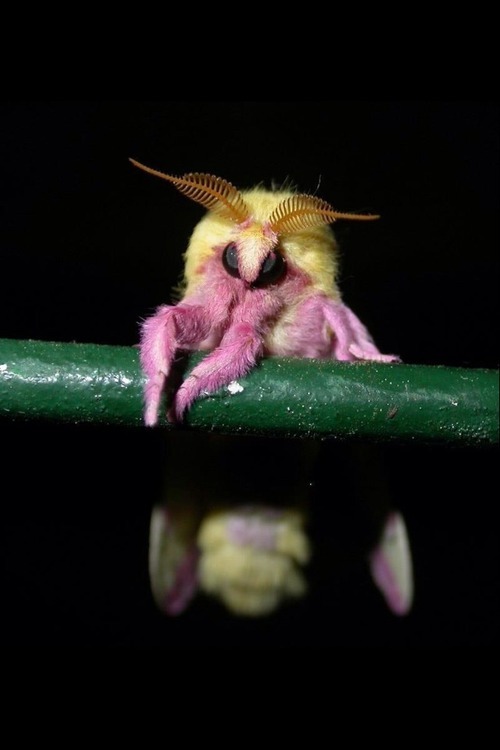
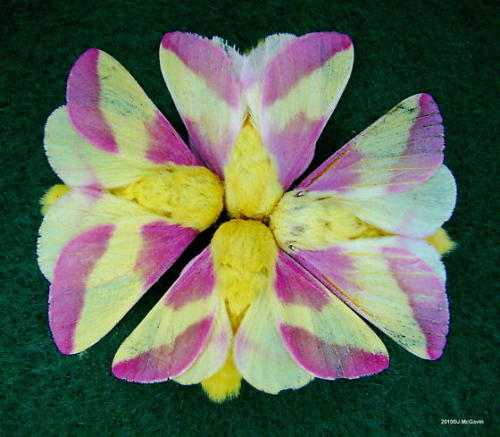


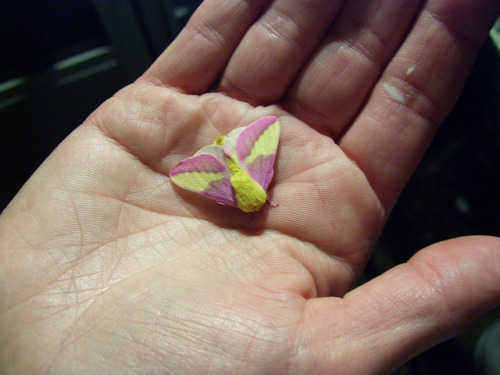
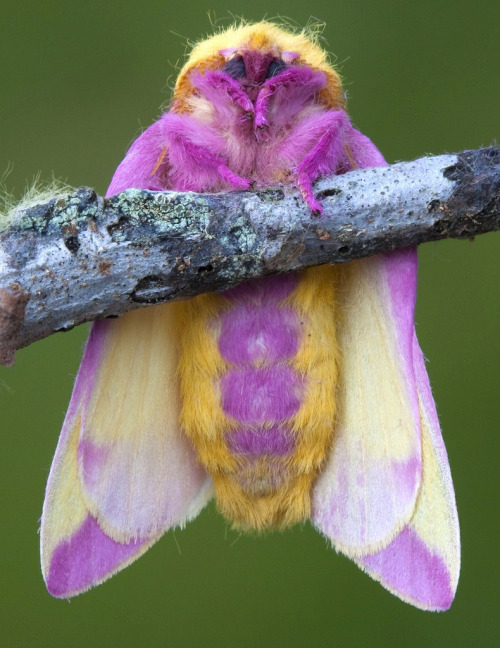
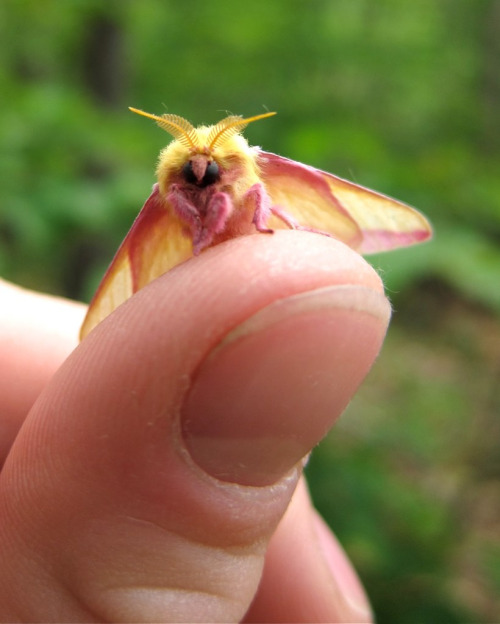
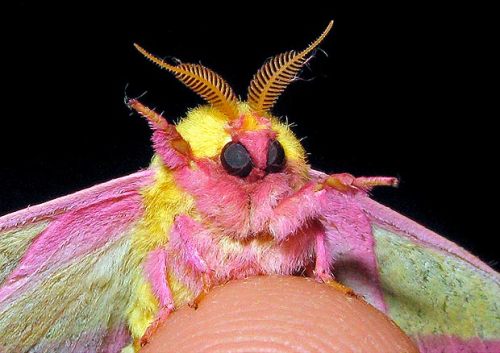
The Rosy Maple Moth is the prettiest moth ever.
(I do not own the rights to these photos, I just wanted to share this beautiful moth with tumblr.)
I’m actually slightly afraid of moths, but the rosy maple moth is so cute and pretty I make a total exception for these things
Reposted from http://lies.tumblr.com/post/57714163141.

bug of the day on Flickr.
Lots of dogbane in the yard so I suppose it was only a matter of time before I spotted one of these beauties. But still – wow! Love the metallic sheen of this dogbane beetle (Chrysochus auratus) caught in this evening’s rain.
Reposted from http://lies.tumblr.com/post/57550885409.
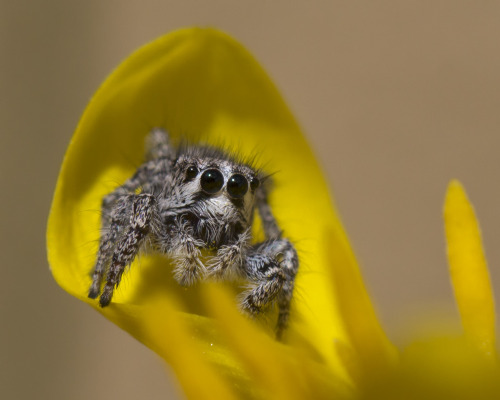
Reposted from http://lies.tumblr.com/post/57197124761.
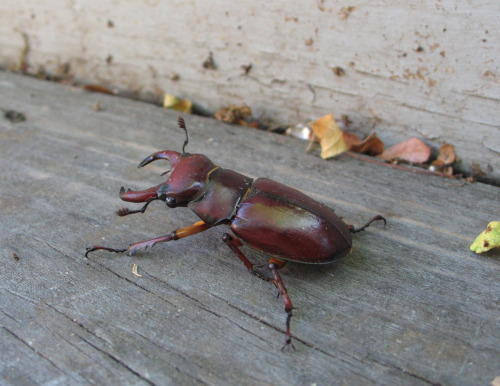
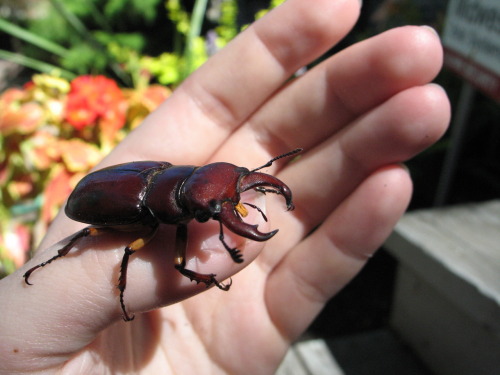
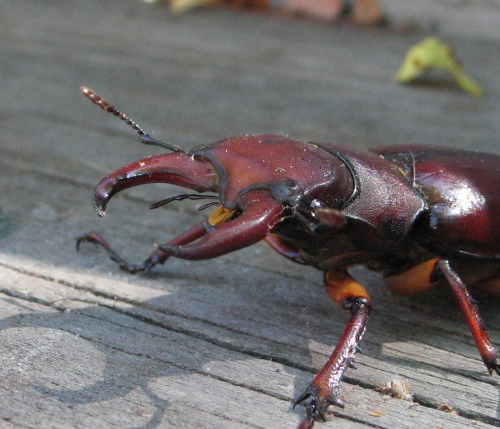
Found this guy in my backyard. He is actually male, I’m not randomly assigning gender this time. He is a common stag beetle, Lucanus capreolus, in the family lucanidae. Related to scarabaeids, hence the lamellate antennae. I will try not to be too gooshy about him, but I think he is adorable. Photos are mine. Released after capture, so I no longer have this specimen (too cool to kill).
Reblogging for commentary. Catch-and-release insect appreciation gives me hope for humanity.
Reposted from http://lies.tumblr.com/post/56856671536.





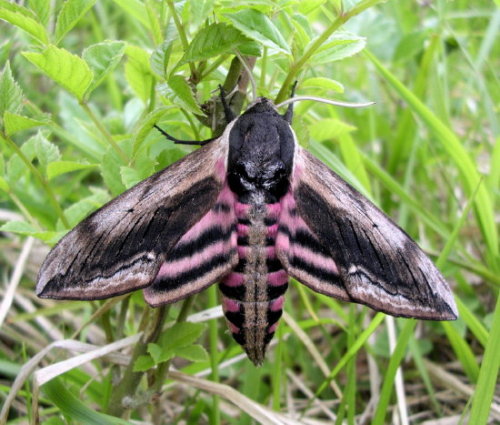


A lot of people have this idea that butterfly = pretty, and moth = dull. I’d just like to talk about how wrong that preconception is.
Oleander hawkmoth (Daphnis nerii)
Cinnabar moth (Tyria jacobaeae)
Emperor moth (Saturnia pavonia)
Hummingbird hawkmoth (Macroglossum stellatarum) (Yes, it actually hovers like a hummingbird)
Death’s-head hawkmoth (Acherontia atropos)
Privet hawkmoth (Sphinx ligustri)
Gold swift (Phymatopus hecta)
Small elephant hawkmoth (Deilephila elpenor)Most of these are also native to the UK, and not particularly rare.
Most of these are from Europe, but North America has many moths just as beautiful.
Reposted from http://lies.tumblr.com/post/55384030086.
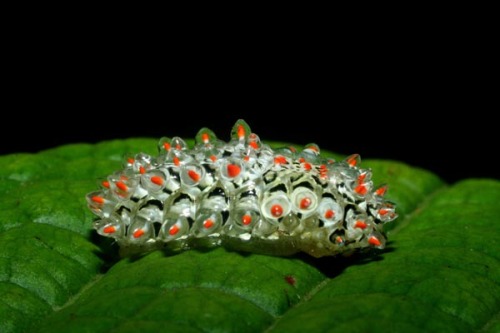
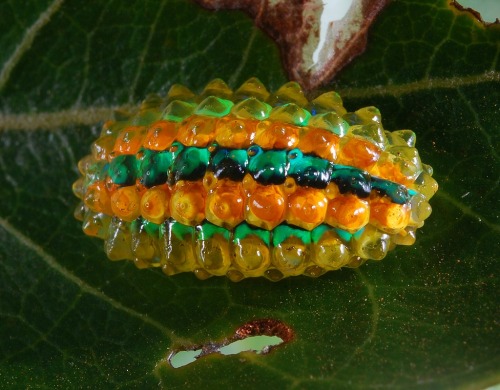
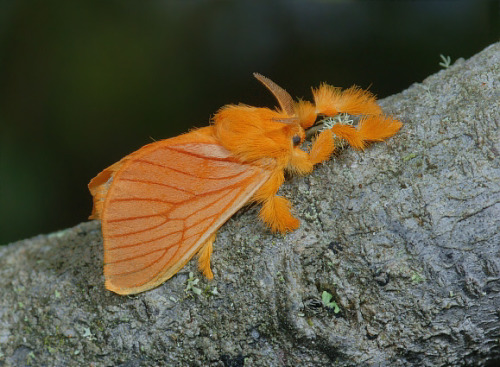
The Jewel Caterpillar
This bizzarely gelatinous, semi-translucent little creature is sometimes referred to as the “jewel caterpillar”, but it’s actually the larvae of a fuzzy orange moth called Acraga coa. This moth is native to Central and South America and belongs to a family known as Dalceridae. There are at least 84 different species of moths in this family, and all of their larvae are so gooey that they’re often nicknamed “slug caterpillars.” At the moment it’s unclear as to why they’re so strangely and conspicuously coloured—biologist Daniel Janzen at the University of Pennsylvania has raised Dalceridae in captivity and reports that the bright, conscpicuous larvae actually spend a lot of their time hanging out on the tops of leaves in full view, like they don’t fear birds at all. Some caterpillars use colour to indicate their toxicity and therefore warn predators away, but there’s no evidence that the Dalceridae caterpillars are poisonous at all. But they do appear to have one defense mechanism: their gooey, gumdrop-like spines break off easily, just like some lizard’s tails break off upon a predator’s touch. So, perhaps this allows the caterpillars a chance to get away from predators. In an attempt to study this function, insect biosystematist Marc Epstein placed Dalcerides ingenita larvae in the same environment as several ants, which would usually devour caterpillars, but these ants backed right away. The ones that tried to attack became stuck in the larvae’s jelly-like body, so the caterpillars seem to repel predators simply by being sticky and uncomfortable. “Jewel caterpillar” is a pretty fitting nickname, then—look all you want, but don’t touch.
Reposted from http://lies.tumblr.com/post/54826069200.
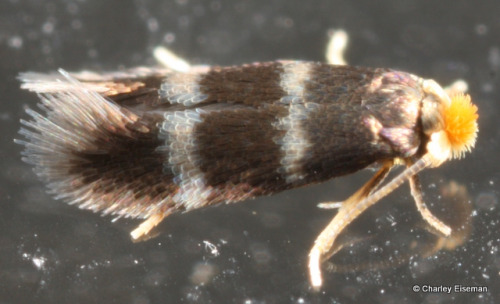
Charley Eiseman (author of Tracks & Sign of Insects and Other Invertebrates) is a personal hero of mine. His latest post at BugTracks is a good example of why: The Tiniest Moths.
Reposted from http://lies.tumblr.com/post/54725335288.